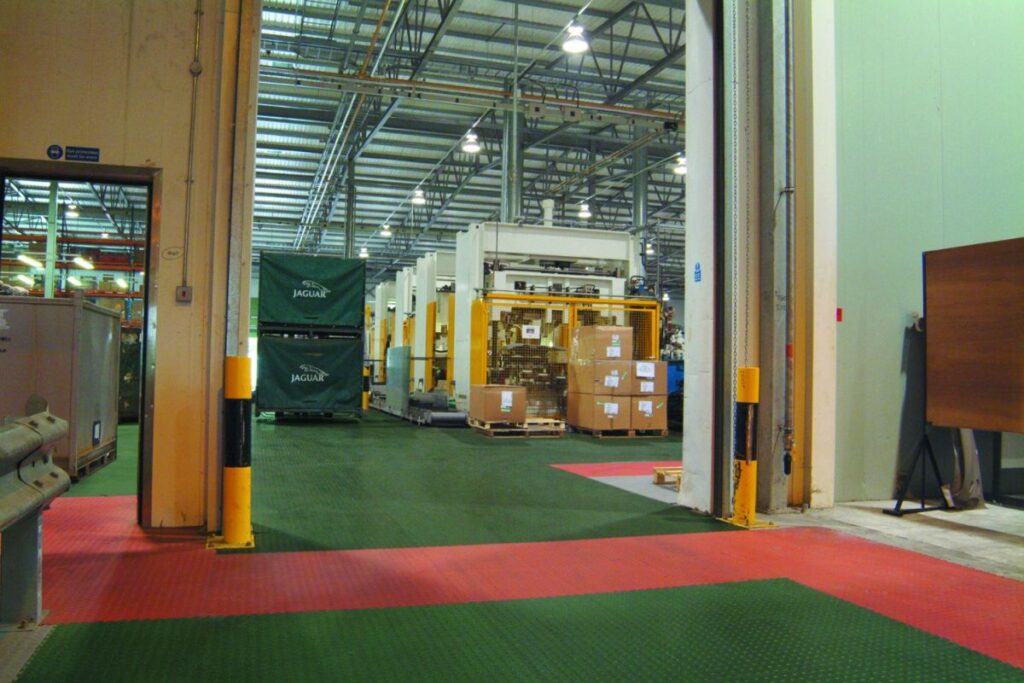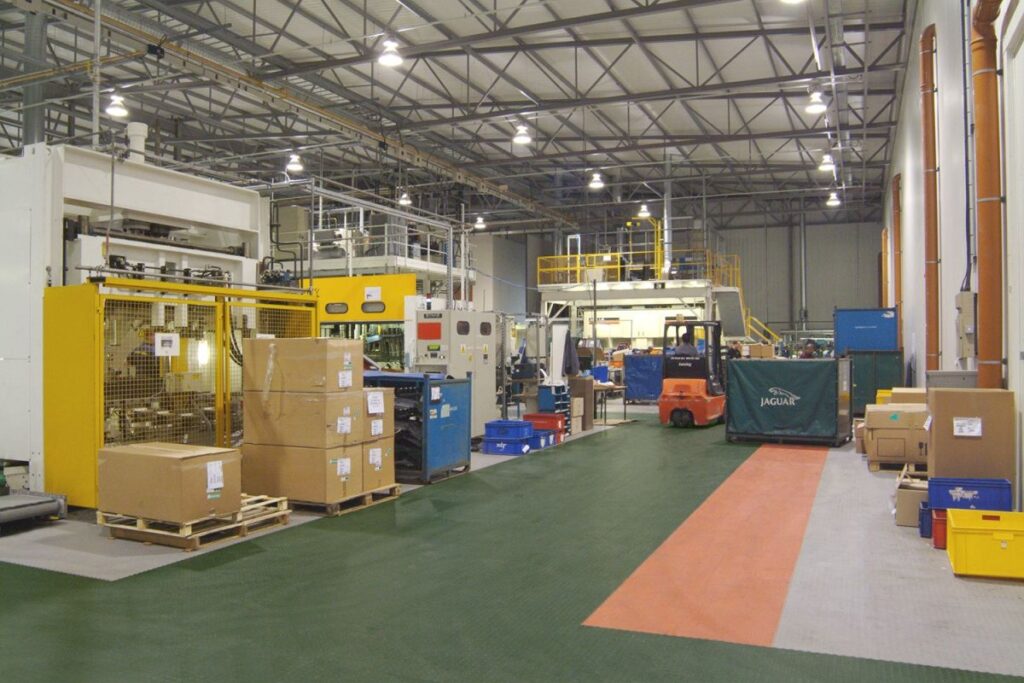Factory flooring has changed a lot of the last few hundred years from just a concrete or wooden floor from the Victorian era to the heavily reinforced PVC floors of the modern day. There are a lot of different types of flooring on the market and this is because of the huge variety of flooring requirements.
Safety standards from authorities such as the GOV.UK have caused a wide range of products to be created to suit specific factory floor needs.
Factories during the industrial revolution era were filled with fraught and one of the major issues was the instability of the factory floor. The floor was made out of wood and often splintered creating a tripping hazard. The floors wore down quickly and needed to be regularly replaced or repaired. It was a far cry from today’s industry where floors need to be able to resist wear from people, vehicles, and products. Floors also need to be able to withstand impacts from falling objects. Thus flooring is required to be robust, durable and in line with the exacting standards of the industrial environment.
Wooden floors weren’t the answer so factories tried using concrete floors. The concrete floors wouldn’t splinter under impact but they could easily be damaged and then present a tripping hazard. A concrete factory floor works well when it is stable and perfectly flat. Concrete is absorbent so it does require the use of a sealer to prevent any issues with dampness and staining. They are very cost efficient but could be easily damaged through impact so aren’t the best solution for factories that use moveable equipment or with products with falling potential.
An improvement on concrete flooring was the two contrasting solutions of Epoxy and Rubber flooring. Epoxy is a chemical resin that forms a hard, robust surface whereas Rubber surfaces resist damage through being softer and responsive. The epoxy comes into its own when it comes to resisting impact or liquid spillage however it does require a top layer of texture to avoid slipping and is also very expensive. Rubber floors do not have a slipping hazard and are a great way to please your ethics department as they are environmentally friendly as they are easily recyclable.
Interlocking flooring that is made from PVC offers easy installation, durability, and slip resistance. A prime example is the R-tile Industrial Flooring which is fire retardant and has a low life cycle cost. They use the unique innovation of an interlocking system that enables quick and easy installation. They are easy to move and re use which is good for a factory environment that requires flexibility. The material is an insulator so it provides a warm floor that is also resistant to heavy duty applications that would cause wear on other types of flooring.
Over the years factory flooring has changed immensely. The important safety regulations dictate the requirements for safe practice within a factory. Safety is the number one priority when it comes to the working environment so it is important that the flooring used in a construction industry meets all expectations. Flooring has evolved from simple wooden or concrete floors to more industry suitable flooring such as Rubber and Epoxy. It has evolved further into innovative interlocking tiling and it will be interesting to see how much further it can evolve if any.
Factory flooring has evolved so haven’t you?
Factory flooring has come a long way over the last number of years, from limited options to now having a lot of different types of flooring on the market and this is because of the huge variety of flooring requirements.



